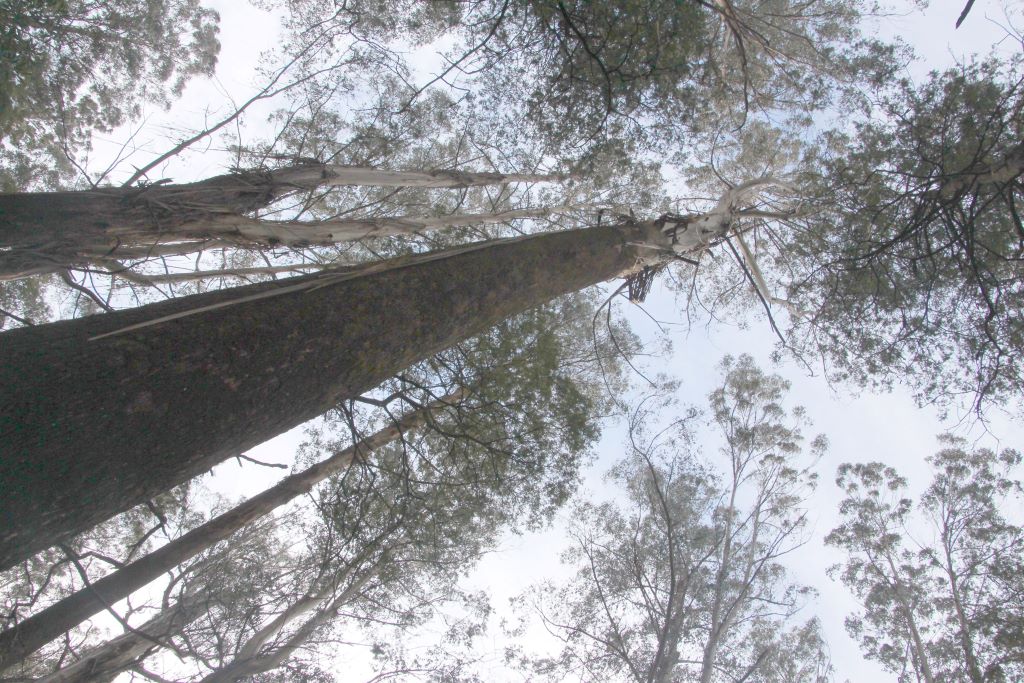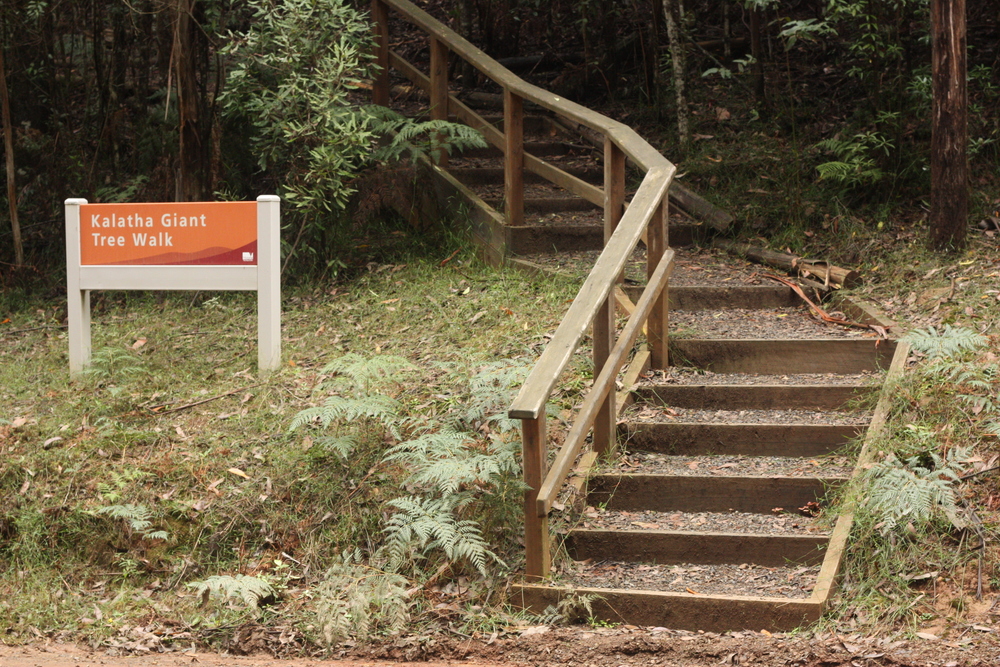In the Taungurong language, Toolangi means ‘tall tree’. True to its name, Toolangi State Forest is home to many of Victoria’s most astonishingly lofty trees that are primarily of the mountain ash species. The scientific name of the mountain ash is Eucalyptus regnans, meaning ‘reigning’; it too is a fitting title for the tallest flowering plants in the world. These kings and queens of the forest grow to great heights, can live for centuries, and provide habitat for an abundance of species.
Towering 73 metres above the forest floor, with a girth of 16 metres at chest height, the Kalatha Giant dominates Toolangi’s treeline. After the Black Saturday bushfires of 2009, a short walking track was created around the tree with signage explaining its significance and the ecology of the area. Following this track up into the forest, you may not at first be able to see the tree for the woods – but peer up through the understorey and you’ll be staggered to find yourself right at the foot of this old dinosaur.

Somehow, the Kalatha Giant also escaped the hand of man. Nearby, a colossal, moss-covered stump bears axe-scars where planks were wedged into the trunk of this former giant as platforms for early loggers to hack it down by hand. It’s a kind of labour that is hard to imagine in an era when machinery can fell trees in a matter of minutes. Who can say what saved the Kalatha Giant from a similar fate? The surrounding stumps and stags seem to point to the unlikeliness of its survival, but at the same time are a reminder of the cyclical nature of the life of the forest.

At different stages in its life, the mountain ash tree attracts different mammals to its heart. Victoria’s faunal emblem, the critically endangered Leadbeater’s possum, tends to prefer shorter, dead trees, possibly because the ongoing decay generates warmth. Greater gliders and yellow-bellied gliders, on the other hand, use living, hollow-bearing trees as their home base. Among its branches is the rich birdlife of the montane ash forest, from satin bowerbirds to fairy-wrens, flame robins and fantails. The voice of the superb lyrebird resounds among the trees. Innumerable species of beetles, spiders and other invertebrates live in its bark, its litter, its soil. This is more than a tree; it’s an entire world.
The area surrounding the Kalatha Giant is now a Special Protected Zone. Whatever is next in this tree’s epic life story, this giant won’t be brought down at the hands of humans. It has already reached an extraordinary age; will we live to see it pass into its next phase, the nourishment of other species in its death and decay? This inevitability isn’t something we should try to prevent; instead, we must ensure that its children and grandchildren – the young trees of this forest – have the opportunity to grow ancient in their turn.
Banner image is of the Kalatha Giant Tree Walk entrance and is courtesy of Alex Mullarky.


Leave a Reply